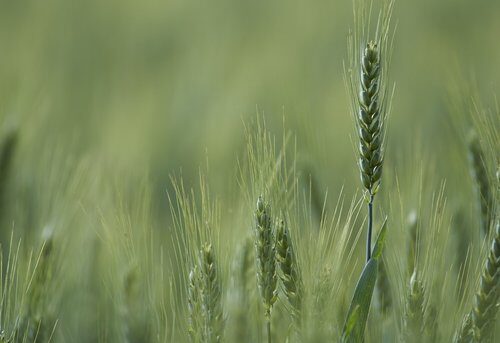Pre-Breeding and Development of Breeding Tools to Diversify Disease Resistance in Bread Wheat

Written by: Ellen Cottee
Lead Researcher: Dr. Colin Hiebert, AAFC – Morden
For much of history, farmers have been interested in growing the best crops possible. Starting in the 1800s, they realized saving seeds of their best performing plants would give them a higher yield – a primitive version of the selective breeding practices common in the industry today.
Many years have passed, and producers and researchers are living in the future – a world in which a stalk of wheat can be reduced its genome, giving incredible insight into the genes that help it survive, thrive and even fight off disease.
As a wheat geneticist, Dr. Colin Hiebert of Agriculture and Agri-Food Canada – Morden has long been fascinated with the minutia of the important crop and how it can be improved for Canadian growers. His latest undertaking, Pre-Breeding and Development of Breeding Tools, is designed to take findings from the lab to the field.
Part of the 2018 – 2023 Canadian National Wheat Cluster, the project has three components: pre-breeding, DNA marker development and new resistant gene activities. Each of these contribute improved wheat breeding processes, especially in the areas of resistance and diversity.
“What motivated me to put in this proposal – and my proposal for the next cluster – is to try and fill some of the gaps that exist in the research continuum,” Hiebert explained. “You want to make certain that those [genetic] discoveries end up in the breeding programs and in the farmer’s field.”
Pre-breeding activities in particular are designed to bridge this gap. Genetic research into wheat relatives produces many interesting findings on disease resistance, performance and more – but these crops aren’t adapted for cultivation, nor are they practical for traditional breeding programs to use.
Through pre-breeding, those genetics can now be distilled into germplasm ready to be crossed with domesticated, tried-and-true wheat varieties for breeders to work with, creating new varieties with specific desired traits.
In addition, DNA markers, which indicate the genes specifically responsible for traits such as disease resistance, allow pre-breeding researchers to select or ‘stack’ genes that can increase resistance in the crop. Breeders can also use these markers to better select parents for crossbreeding and assessing which resistance genes made it through the whole breeding process.
“What we’re trying to do is develop markers that have a high predictive value, so you can use it in different ways,” Hiebert says. “DNA markers are really useful tools.”
Hiebert and his team have focused specifically on identifying genes resistant to common wheat diseases, including stem rust, leaf rust and ergot – and the results are promising.
Through genetic mapping and testing of a wheat line from Kyoto University in Japan, the team discovered a gene broadly effective against both North American and exotic races of stem rust.
“A gene like that is interesting because it gives us resistance to pathogens present today, and gives us some risk mitigation in the event that some of these exotic strains of the fungus end up being inadvertently transported to North America,” Hiebert explained.
As the current research cluster comes to a close, the team has germplasm ready to share with breeding programs and even more knowledge of the wheat genome. While pre-breeding and other genetic research doesn’t always result in an immediate in-the-field solution, Hiebert maintains it is critical to the future of plant breeding.
“Having the support of producer groups and other funders, for them to have that foresight to invest money now even when the payoff isn’t immediate, is great,” Hiebert said. “We know we need tools down the road, and if we don’t start now, the well runs dry.”